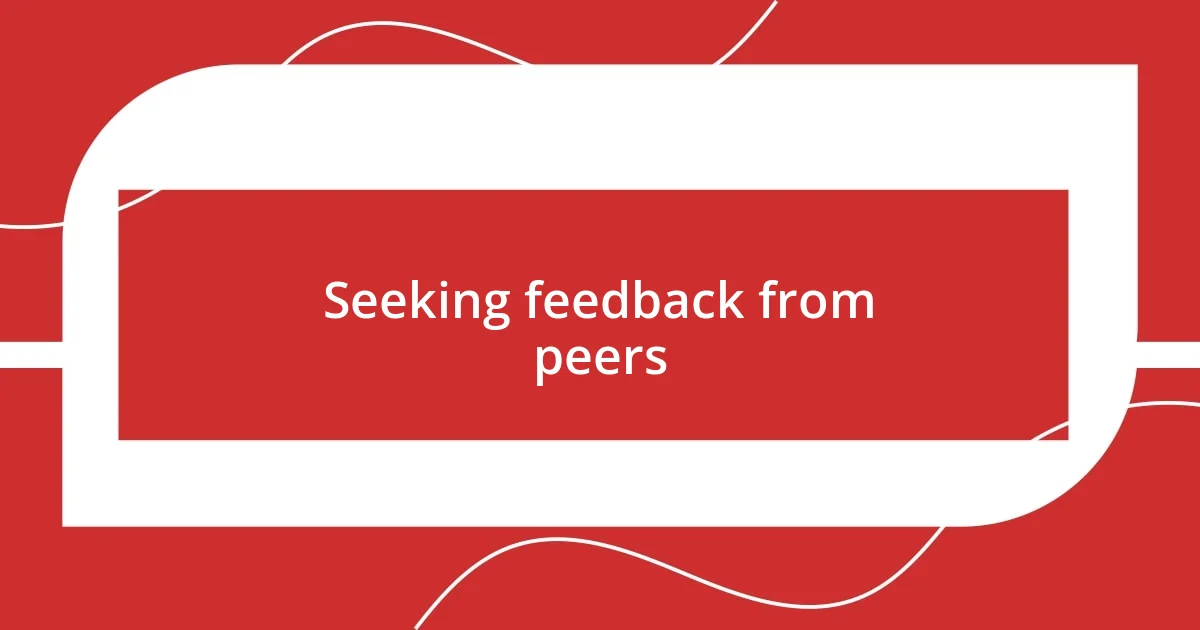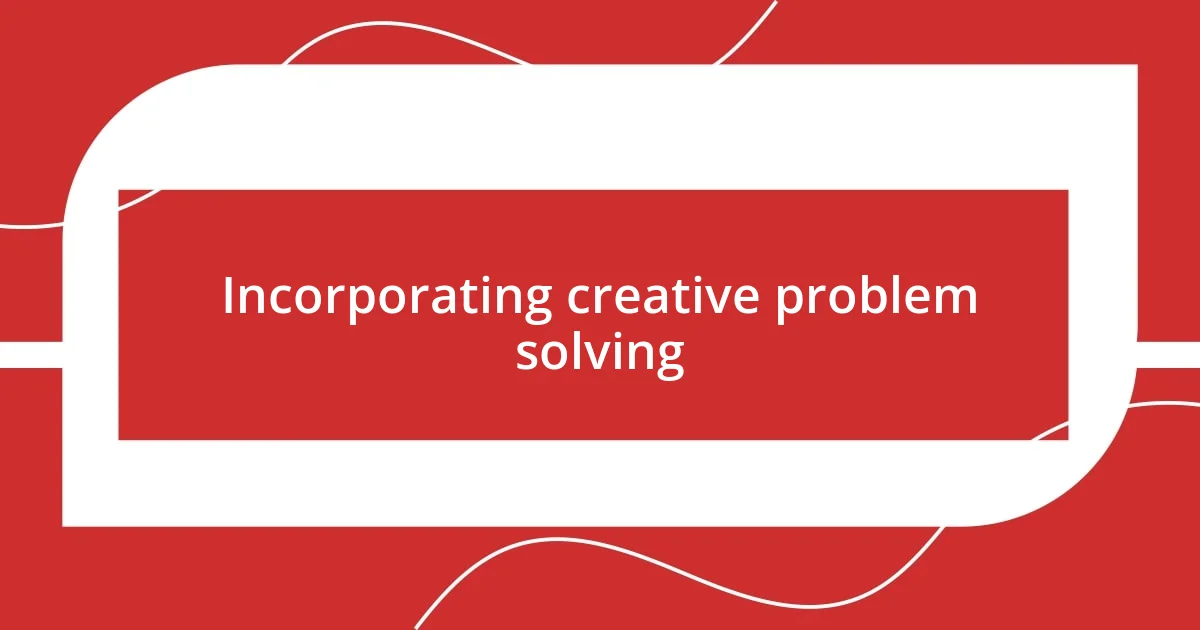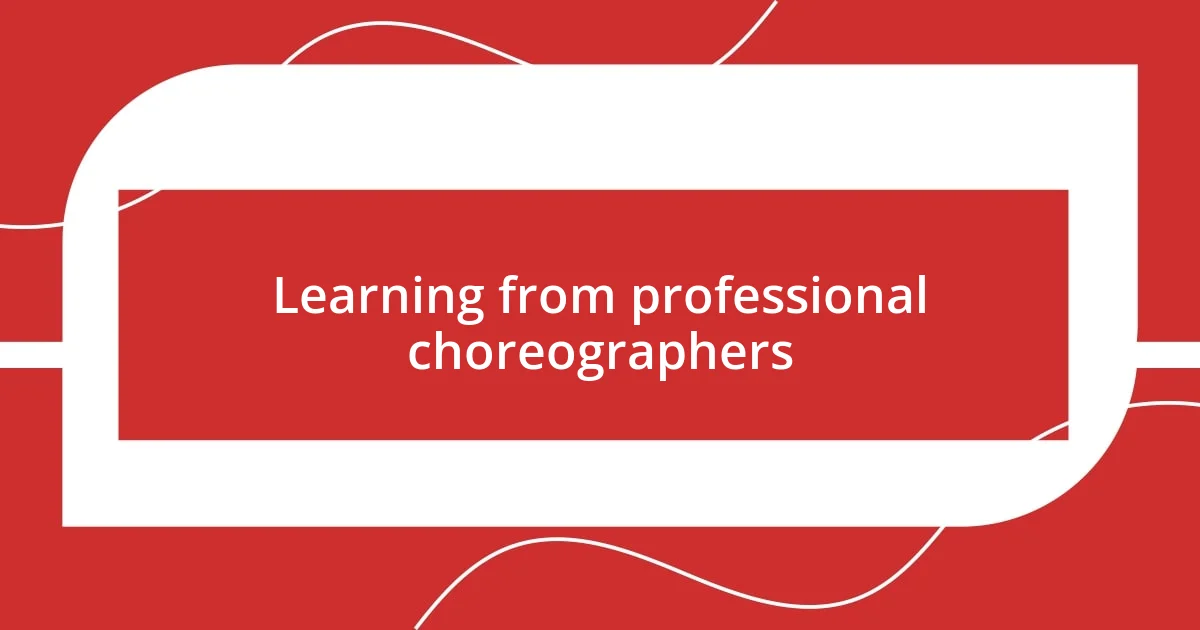Key takeaways:
- Choreography challenges can lead to personal growth, encouraging self-exploration and the development of unique styles.
- Creating a structured practice routine with specific goals and incorporating feedback from peers fosters skill improvement and emotional resilience.
- Learning from professional choreographers emphasizes storytelling, versatility, and reframing challenges as opportunities for creative innovation.

Understanding choreography challenges
Choreography challenges can obscure the creative process, often leaving us feeling frustrated or stuck. I remember a time when I was working on a routine for a competition and I just couldn’t get the transitions right. It felt as if each move I practiced was a reminder of my limitations, and I began to wonder, why is this so hard?
One of the fundamental hurdles in choreography is blending musicality with movement. In my experience, it’s like trying to fit a square peg into a round hole—sometimes the music speaks one language while your body wants to express another. Reflecting on those moments when I couldn’t sync the beats with my steps, I realized that these challenges often lead to deeper self-exploration and a unique style.
Moreover, there’s the emotional facet that can complicate the process. I’ve seen dancers freeze under pressure when they lack confidence in their abilities. Have you ever felt that dread before a performance? It can be overwhelming, but acknowledging these feelings has helped me grow. It’s in those moments of anxiety and self-doubt that we learn the most about our resilience and passion for dance.

Identifying personal obstacles
Recognizing the personal obstacles we face in choreography is often the first step toward overcoming them. I vividly recall when an unexpected injury sidelined me for weeks. The frustration was palpable; I felt as if my dance journey was unraveling. By taking a moment to reflect on my physical limitations, I understood that my body needed support and rest. This realization shifted my focus from what I couldn’t do to what I could explore creatively during recovery.
Here are some common personal obstacles dancers might identify:
- Physical limitations: Injuries or fatigue can hinder movement and creativity.
- Mental blocks: Self-doubt and pressure can stifle innovative thinking.
- Style mismatch: Difficulty in blending personal style with choreography.
- Fear of judgment: Worrying about how peers or audiences perceive your performance.
- Technical proficiency: Struggling with specific dance techniques can lead to frustration.
By acknowledging these challenges, I found a path to develop not just my skill set, but also my emotional resilience. Embracing each obstacle allowed me to grow and discover new ways to express myself through movement, ultimately contributing to my growth as a dancer.

Developing a practice routine
Developing a structured practice routine was a game changer for me. When I first started, my rehearsals were all over the place. I’d jump from one section to another, completely losing track of what I was meant to improve. It wasn’t until a mentor suggested I break my routine into focused segments that I began to see progress. Now, I dedicate specific time slots to technique, improvisation, and choreography review, ensuring that I’m nurturing all aspects of my dance.
One of my favorite practices involves setting small, achievable goals for each session. For instance, during one memorable week, I aimed to master a particularly tricky turn sequence. I broke it down into individual moves and worked on them until they felt effortless. Each tiny victory fueled my motivation. Have you ever felt that rush when a challenging move finally clicks? It’s incredibly rewarding and keeps me excited to return to the studio.
Finally, I’ve learned the importance of incorporating variety into my routine. While it’s essential to build muscle memory, I found that repeating the same steps endlessly became monotonous. Occasionally, switching styles or integrating new music sparks fresh creativity. I remember one practice where I danced to jazz instead of the usual contemporary; it was liberating! This change not only challenged me but also inspired new ideas for my choreography. It’s all about keeping the energy alive while pushing through the challenges!
| Practice Element | Description |
|---|---|
| Technique Focus | Dedicate time to honing specific dance techniques, like turns or jumps. |
| Goal Setting | Establish achievable, short-term goals to stay motivated and track progress. |
| Style Variation | Incorporate different dance styles or music to refresh your creativity. |
| Feedback Time | Set aside time for self-reflection or seeking feedback from peers to improve. |

Seeking feedback from peers
As I ventured deeper into choreography, I discovered something transformative: the value of peer feedback. Early on, I was hesitant to share my work, fearing judgment. However, when I finally decided to open up and showcase my routine, the insights from fellow dancers were enlightening. One friend pointed out a particular section where I rushed – a detail I had overlooked. This not only helped me refine that choreography but also invited an enriching dialogue about our individual creative processes.
Listening to constructive criticism had its emotional ups and downs, but it became a pivotal teaching moment for me. I remember a rehearsal where a supportive peer offered suggestions that challenged my approach. At first, I felt defensive, but slowly I realized that their perspective opened doors I hadn’t considered. Have you experienced a similar moment when someone’s feedback altered your view? Embracing such insights can truly elevate our work.
Over time, I made it a habit to seek out opinions from those I admired. It created a space for growth and collaboration. Engaging with peers not only enhanced my choreography but also built a sense of community. Sharing vulnerabilities and learning from each other is what binds us as dancers after all. That connection and trust can be a catalyst for pushing boundaries and exploring new dimensions in our art.

Incorporating creative problem solving
Incorporating creative problem-solving has been a crucial aspect of overcoming challenges in choreography for me. I’ve often faced moments where an idea just didn’t seem to fit. During one particularly intense rehearsal, I was stuck on a sequence that felt clunky and uninspired. I decided to approach it from a different angle. Instead of forcing the steps, I took a break and brainstormed alternate movements that conveyed the same emotion. This shift not only resolved the blockage but also led to a more dynamic section I hadn’t even imagined before. Have you ever found that stepping back allows you to see the bigger picture?
Another strategy I’ve found immensely helpful is collaborating with dancers outside my usual circle. I vividly recall a creative workshop I attended, where the energy was electric and ideas flowed freely. Dancing with someone whose style diverged from mine challenged my thought process. I learned to infuse their techniques into my own work, which opened up a new world of possibilities. It was a refreshing reminder that collaboration often breeds innovation. How often do we limit ourselves due to familiarity? Sometimes, embracing the unfamiliar can elevate our expression.
I also utilize visual inspiration for creative problem-solving. During one project, I felt the choreography was lacking depth. I started searching for visuals—art pieces, photographs, and even nature scenes. This practice ignited something within me, leading to movement phrases that mirrored the emotions I saw. It was remarkable how something as simple as a color palette or a mood board could spark new choreography. Have you ever looked to the world around you to inspire your own creations? That connection between diverse forms of expression often breathes new life into our art.

Learning from professional choreographers
Learning from professional choreographers can be a game changer in developing your craft. I recall attending a masterclass with a well-known choreographer who emphasized the importance of storytelling in dance. They demonstrated how every movement can convey emotions and narratives that resonate with the audience. It made me rethink my approach; now, I often ask myself, “What story am I telling through this choreography?” This self-reflection has enriched my routines, making them more engaging and meaningful.
During one session, the choreographer shared their struggles and breakthroughs, reminding me that even the best face hurdles. Hearing them discuss facing criticism inspired me to shift my mindset. Instead of viewing setbacks as failures, I’ve learned to see them as opportunities for growth. Have you ever reframed a challenge into a chance for improvement? Embracing this perspective has empowered me to take risks in my choreography, ultimately leading to more innovative and authentic expressions.
What truly stood out was the emphasis on versatility. One insightful exercise involved breaking down different dance styles and integrating them into our choreography. I found this exploration exhilarating; it pushed me out of my comfort zone. Trying to merge contemporary with hip-hop, for example, reignited my passion for movement. How often do you challenge yourself to step outside your style? Engaging with professional choreographers has taught me that flexibility and curiosity can only enhance our artistry.















